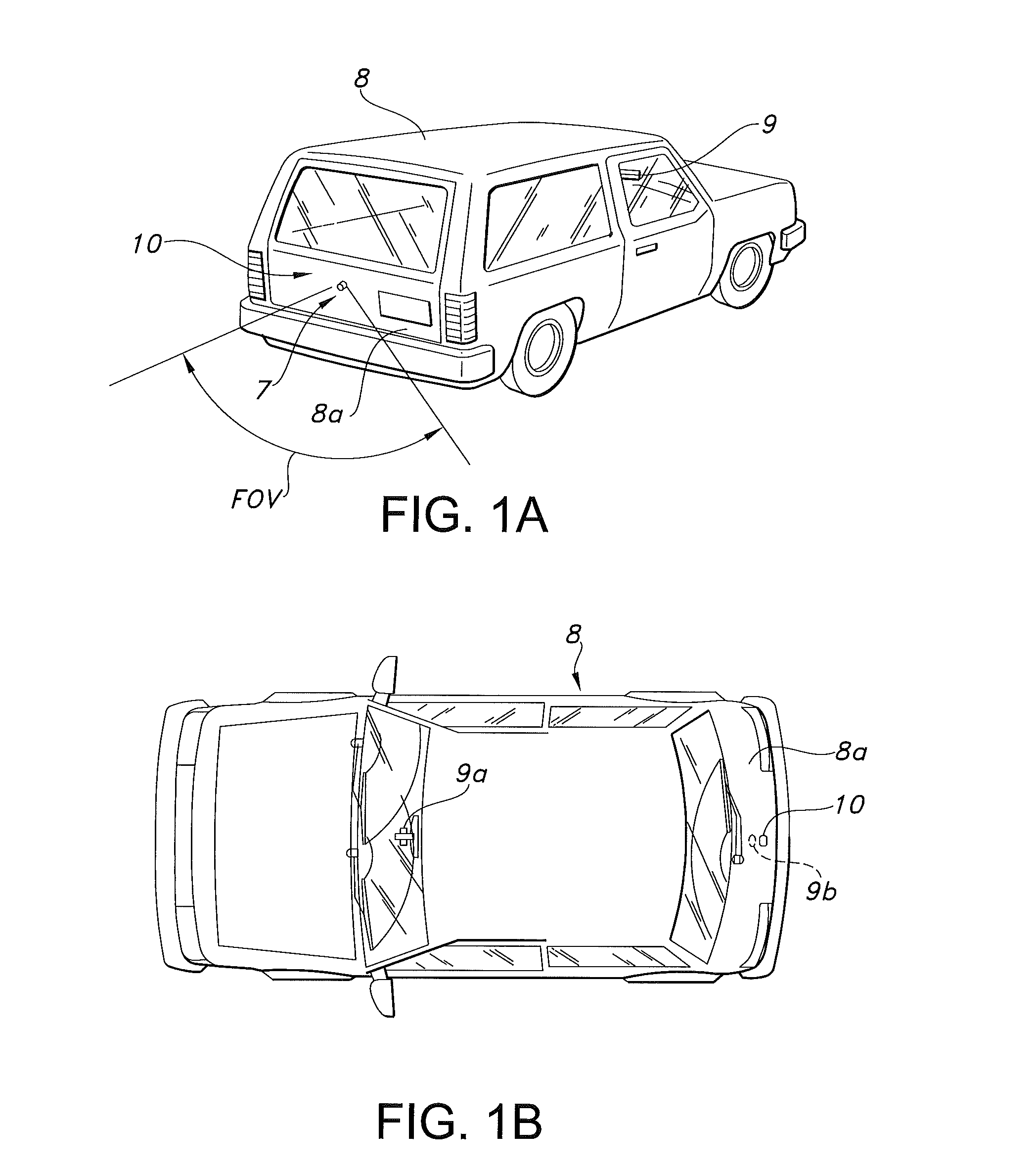Integrated Automotive System, Pop Up Nozzle Assembly and Remote Control Method for Cleaning a Wide Angle Image Sensors Exterior Surface
a technology for wide angle image sensors and automotive systems, applied in television systems, vehicle cleaning, cleaning using liquids, etc., can solve problems such as confusion, dissatisfaction or safety issues, external cameras exposed to harsh environmental surroundings, and difficulty in moving vehicles from parked positions, so as to reduce or eliminate field of view issues, efficient and effective cleaning of sensors, and without negatively affecting aesthetics
- Summary
- Abstract
- Description
- Claims
- Application Information
AI Technical Summary
Benefits of technology
Problems solved by technology
Method used
Image
Examples
Embodiment Construction
Vehicle Imaging System and Camera Module Nomenclature
[0054]In order to provide an exemplary context and basic nomenclature, we refer initially to FIGS. 1A-1D, illustrating a prior art imaging system for a vehicle and a camera module as disclosed in U.S. Pat. No. 7,965,336 (to Bingle et al). This overview will be useful for establishing nomenclature and automotive industry standard terminology, in accordance with the Prior Art.
[0055]Referring now to FIGS. 1A-1D, an image capture system or imaging or vision system 7 is positioned at a vehicle 8, such as at a rearward exterior portion 8a of the vehicle 8, and is operable to capture an image of a scene occurring interiorly or exteriorly of the vehicle, such as rearwardly of the vehicle, and to display the image at a display or display system 9a of the vehicle which is viewable by a driver or occupant of the vehicle (see, e.g., FIGS. 1A and 1B). Imaging system 7 includes a camera module 10, which is mountable on, at or in the vehicle to ...
PUM
 Login to View More
Login to View More Abstract
Description
Claims
Application Information
 Login to View More
Login to View More - R&D
- Intellectual Property
- Life Sciences
- Materials
- Tech Scout
- Unparalleled Data Quality
- Higher Quality Content
- 60% Fewer Hallucinations
Browse by: Latest US Patents, China's latest patents, Technical Efficacy Thesaurus, Application Domain, Technology Topic, Popular Technical Reports.
© 2025 PatSnap. All rights reserved.Legal|Privacy policy|Modern Slavery Act Transparency Statement|Sitemap|About US| Contact US: help@patsnap.com



